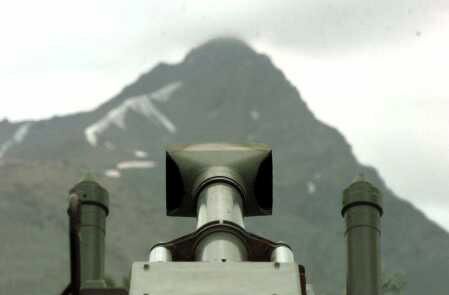Delving deep into the history of India means going back to the times immemorial, when the early human civilizations like Indus Valley Civilization and Mohanzodaro came into being. Thereafter, as human lives evolved, new chapters were written in the history of India.
From wars, invasions, and the ultimate fight for the freedom of the nation, it all makes for one of the most intriguing history any nation has ever had. Here are the some of the greatest moments in Indian History ranked in an order.
10. Rajendra Chola’s south east naval expeditions
Rajendra Chola I succeeded his father as the Chola emperor, and is recognized for expanding his already vast empire to most parts of the country and the South-East Asia. Rajendra Chola changed the face of Indian history by sending a naval expedition to Indi-China, the Malay Peninsula and Indonesian archipelago in order to subdue the Srivijaya Empire. These expeditions conducted to establish Chola’s dominance in the seas of South-East Asia also strengthened ties between India and South-East Asia, and helped establish diplomatic ties between them and China.
9. Battles of Tarain and Islamic conquest of India
Battles of Tarain aka Battles of Taraori, were fought in 1191 and 1192 near the town of Tarain (near Thanesar in present Haryana). Northern India was then ruled by stern Rajputs including Prithviraj Chauhan – then king of Ajaymeru (now Ajmer). When Muhammad Ghori who had then become the master of the Punjab, Multan and Sindh first tried to invade Delhi, Prithviraj with his brother Govind Raj, defeated Ghori and forced him back to Ghazni. Muhammad Ghori in his second attempt in 1192 marched into the Rajput territory with more vigor and force and defeated the Rajputs in a bloody battle to lay foundation of Islamic rule in Northern India.
8. Babur and the Mughal Empire in India
In 1495, at the age of 12, Babur succeeded his father as ruler of Farghana (presently in Uzbekistan). He twice attacked Samarkand but failed miserable and even lost Farghana. Soon he with his newly formed army conquered Kabul. He then marched towards the rich lands of India he had known about from his grandfather Timur’s invasion of India. Babur defeated Ibrahim Lodi in the First Battle of Panipat in 1526 and conquered the Delhi Sultanate and set up the Mughal Empire in India by becoming the first Mughal emperor. Babur’s son Humayun defeated the Afghans in Agra and Babur defeated Rana Sanga of Mewar to capture the powerful Rajput state in central India to become the master of Hindustan.
7. Ashoka the Great and his equality for all policy
Ashoka Maurya or Ashoka the Great as we know him was an emperor of the Maurya Dynasty. Ashoka is known majorly for ruling almost all of Indian Subcontinent, right from the Hindu Kush Mountains to Assam and what we knows as Bangladesh now, he also ruled as far south as Kerala and Andhra Pradesh in the south. After the devastation he saw in the invasion he carried out on Kalinga, he converted into Buddhism and started embracing nonviolence and Buddhist principles as part of his leadership policies, which compels historians to regard Ashoka as ‘Dharmashoka’.
6. Formation of East India Company
The very first company established by the Britishers to carry trade in India was the East India Company. Britishers had seen great trading potential in Indian and easily secured trading rights from the rulers of Indian. Eventually they established their stronghold on the trading business and this is when the first sparks for occupying the Indian Territory got fueled.
5. Battle of Plassey
The Battle of Plassey established the rule of Britishers in the country. It was fought between the Nawab of Bengal and the East India Company. And, despite Indian troops being supported by the French, the British fought a fierce and brutal battle, which won them the final victory. In the end, the Nawab not only lost the war, but was later made to pay a heavy compensation for the same.

The first nationwide revolt against the rule of the Britishers took place during 1857-58 and is often known as the Sepoy Mutiny. Mangal Pandey, the first ever freedom fighter of India revolted against the rule of strangers in the country. In other parts of the Indian, the revolt was carried forward by Bhadur Shah Zafar, Rani Lakshmi Bai, Babu Vir Kumar Singh, Tantya Tope, and other famous leaders.
3. India wins freedom
After years of endless struggle, brutal wars and a lot of dissonance against the British Rule, it was in the year 1947 that India finally won its freedom back from the Britishers. It was also the year when the country was divided into two parts, Indian and Pakistan to form two separate domains.
2. Sino Indian War
Sino Indian was fought between the Indian and China. The main pretext of the war was the disputed Himalayan Border. But, besides this too many violent border incidents took place after the Indian government had granted permission to the Tibetan leader Dalai Lama to settle in the country. All these combined led war that was fought under notably harsh conditions.
1. Kargil War
An armed conflict that took place between the India and Pakistan during May 1999 is most often referred to as the Kargil Conflict. It all started with the large scale infiltration activities of Pakistani soldiers and Kashmiri Militants, in to the Indian Side of the LOC. This is an example of the most recent high altitude wars fought that had caused significant logistics problems.


